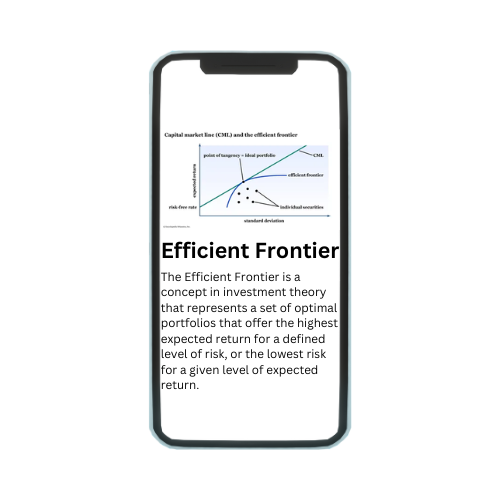Bond discount refers to the situation when a bond is sold for less than its face (or par) value. This typically occurs when market interest rates rise above the bond’s coupon rate, making the bond less attractive to investors. As a result, the bond’s price decreases, leading to a discount.
For example, if a bond with a face value of ₹1,000 has a coupon rate of 5% but similar bonds are yielding 6%, it may be sold for ₹950. Investors who purchase discounted bonds can benefit from potential capital appreciation if the bond matures at par value, along with regular interest payments.
Understanding Bond Discount:
- Face Value: The face value of a bond, also known as par value, is the amount the issuer agrees to pay the bondholder at maturity. For example, a bond with a face value of ₹1,000 will pay the bondholder ₹1,000 upon maturity.
- Coupon Rate: The coupon rate is the interest rate the bond issuer agrees to pay the bondholder, typically expressed as a percentage of the face value. For instance, a bond with a 5% coupon rate will pay ₹50 annually for a bond with a face value of ₹1,000.
- Market Price: The market price of a bond fluctuates based on supply and demand dynamics, interest rates, and other economic factors. When the market price falls below the face value, the bond is considered to be trading at a discount.
Causes of Bond Discounts:
Several factors can lead to a bond being sold at a discount:
- Rising Interest Rates: One of the primary reasons for a bond discount is an increase in prevailing interest rates. When new bonds are issued with higher coupon rates, existing bonds with lower rates become less attractive, causing their market price to decrease. For example, if new bonds offer a 6% yield while an existing bond offers only 5%, the existing bond may drop in price to remain competitive.
- Credit Risk: If the issuer’s creditworthiness declines, investors may demand a higher yield to compensate for the increased risk. This can cause the bond’s market price to fall below its face value.
- Market Conditions: Changes in the overall economic environment, inflation expectations, and investor sentiment can also impact bond prices. For example, if the economy is weakening, investors may demand a higher yield on bonds, leading to discounts.
Calculating Bond Discount:
The bond discount can be calculated using the following formula:
Bond Discount=Face Value−Market Price
For instance, if a bond with a face value of ₹1,000 is currently selling for ₹950, the bond discount would be:
Bond Discount=₹1,000−₹950=₹50
Bond Discount = ₹1,000 – ₹950 = ₹50
Bond Discount=₹1,000−₹950=₹50
Implications of Bond Discounts:
- Higher Yield for Investors: Bonds purchased at a discount offer investors a higher yield than the coupon rate, as they benefit from both the regular interest payments and the capital appreciation realized when the bond matures at par value. The yield can be calculated using the following formula:
Yield to Maturity (YTM)=Annual Coupon Payment+(Face Value−Market Price)/Years to Maturity/ Market Price
- Attractiveness for New Investors: Discounted bonds can be attractive for new investors looking for income and potential capital gains. They can provide an opportunity to lock in higher yields compared to newly issued bonds.
- Interest Rate Sensitivity: Discounted bonds are more sensitive to changes in interest rates. If interest rates continue to rise, the price of existing discounted bonds may decline further, leading to potential losses for investors.
Example of a Bond Discount in Practice:
Let’s consider a hypothetical bond scenario:
- Bond Details:
- Face Value: ₹1,000
- Coupon Rate: 5%
- Annual Coupon Payment: ₹50 (5% of ₹1,000)
- Market Price: ₹950
In this example, the bond is sold at a discount of ₹50. If an investor buys this bond for ₹950, they will receive ₹50 annually in coupon payments. At maturity, they will receive the face value of ₹1,000, realizing a capital gain of ₹50 along with the interest payments.
Risks of Buying Bonds at a Discount:
While buying discounted bonds can offer higher yields, investors should consider the following risks:
- Credit Risk: If the issuer’s financial situation worsens, there is a risk that they may default on interest payments or the principal at maturity.
- Interest Rate Risk: If interest rates continue to rise, the bond’s market price may decline further, increasing the risk of capital loss.
- Market Volatility: Changes in market conditions can lead to price fluctuations, which may impact the overall return on investment.
Conclusion:
Bond discounts are an important aspect of the bond market, reflecting the relationship between interest rates, credit risk, and market conditions. They provide investors with opportunities to acquire bonds at lower prices, potentially leading to higher yields and capital appreciation. However, it is essential for investors to be aware of the associated risks and conduct thorough analysis before purchasing discounted bonds. Understanding bond discounts can help investors make informed decisions and effectively manage their fixed-income portfolios.







